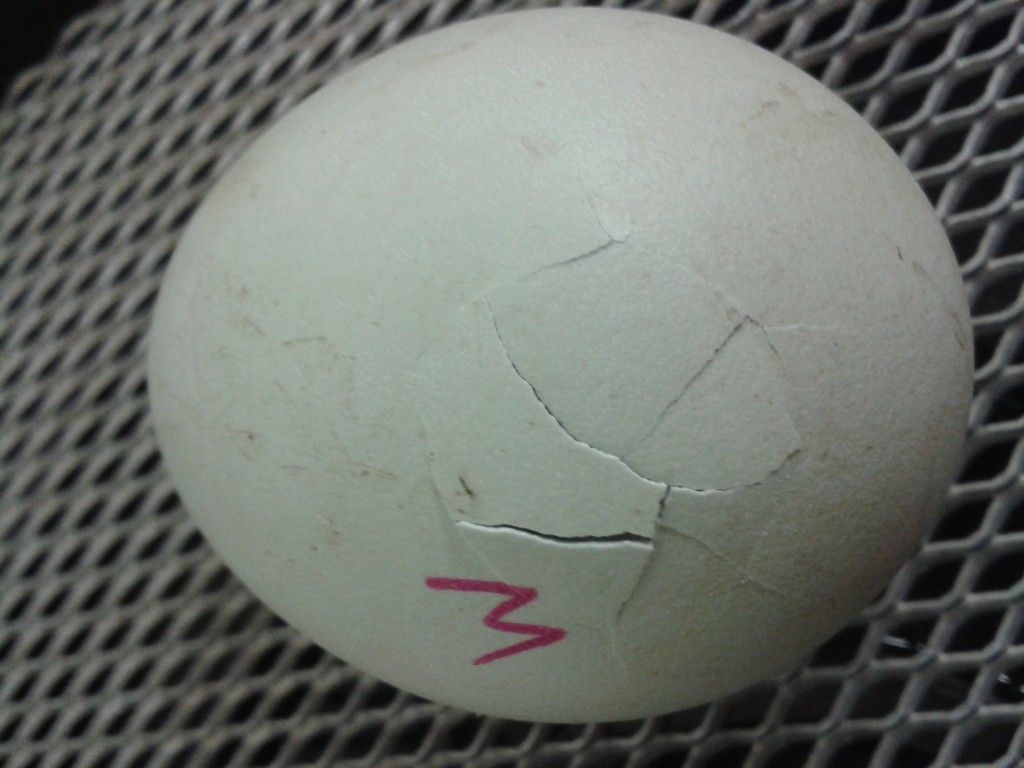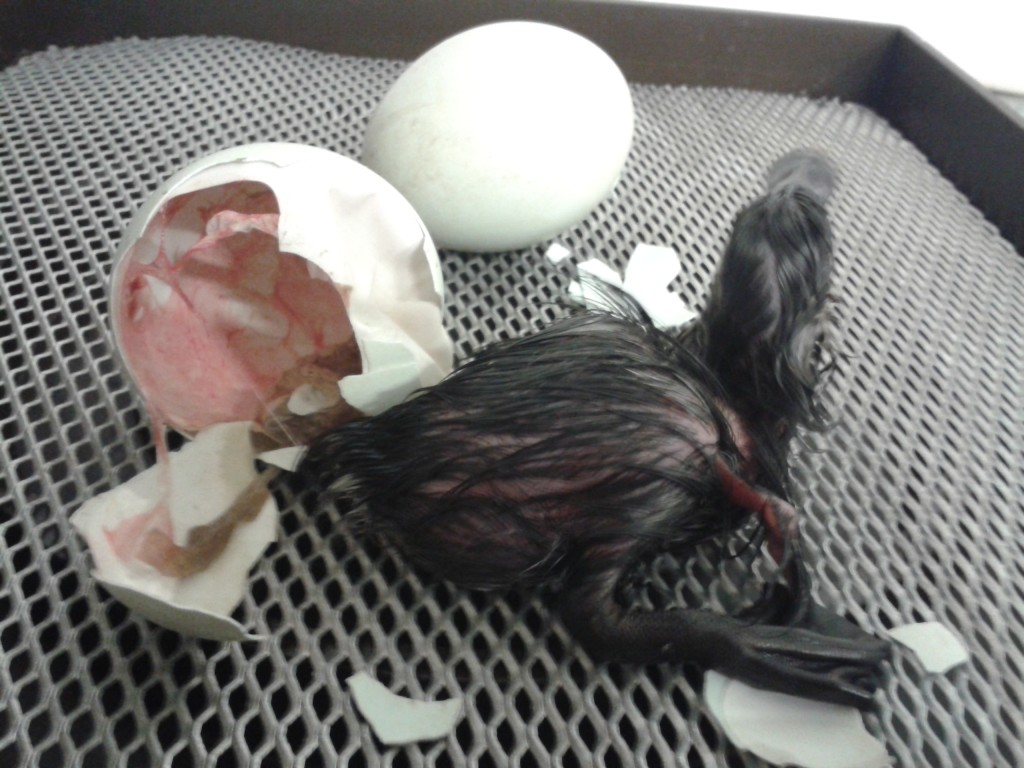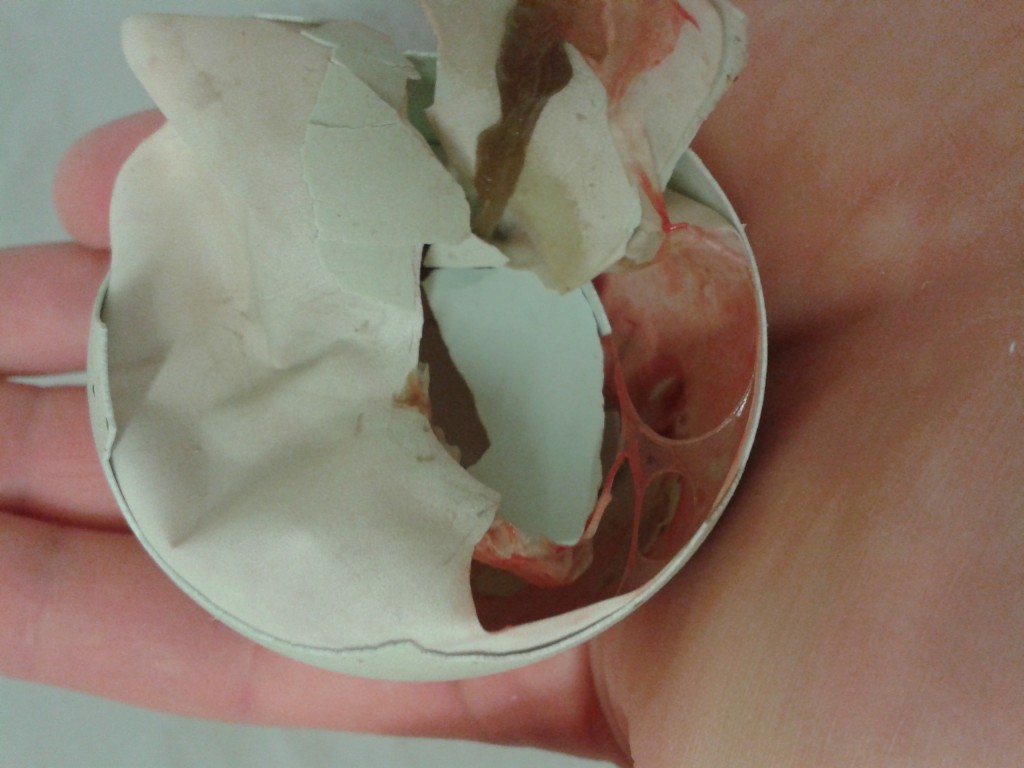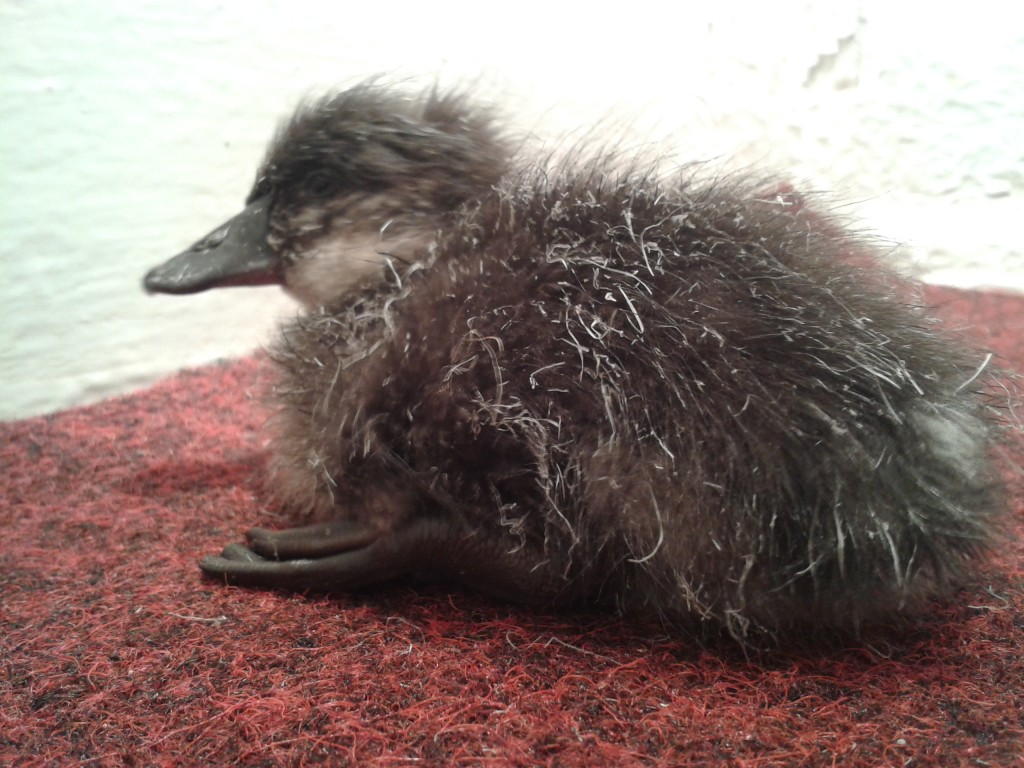A Maccoa makes its way into the world...
As it is Downy Duckling week @wwtslimbridge wetland centre I thought I would feature for you some of the remarkable hatching feats that some of our wonderful species achieve in their race for life.
This big egg is exhibiting a big crack! The Maccoa duck is part of the Stifftail family; and this family of ducks lay some of the biggest eggs in proportion to body size in the wildfowl world. This egg would have been between 15-20% of the female's body weight, and she could have laid up to 7 of them! The stifftails invest in their large porous eggshells so that their offspring are as mature and independent as possible. This way she is more likely to be reproductively successful as her offspring will be less dependent on her. It's a good strategy; even if it does mean she needs to lose one third of her body weight sitting on eggs that weigh more than herself for 28 days...

Big eggs create big ducklings, and it is no surprise that the Maccoa explodes rather than hatches from its shell... they've got to have an entrance after all! Because their eggshells are so porous and their beaks so broad, the stifftail is not capable of pipping traditionally using a milk tooth like regular wildfowl (although they do develop one...) As a result of the stifftail family's native humid environment they have a porous eggshell which allows their large eggs to evaporate successfully during incubation. It all makes the eggs less structurally sound; and so dramatic exits are quite their forte.

You can see here in quite extreme detail the physical details of the inside of the egg. You can see the fine vein network of the inner membrane which attached the duckling to its life-giving oxygen source; the shell! You can also see the leathery outer membrane which helped anchor the duckling safely inside the egg. For a stifftail, breaking and ripping the membrane can be as difficult a job as pipping through the shell itself due to their lack of manoeuvrability. They take the traditional 28 days to hatch, but wait until the very last minute to escape! Once they have got into the airspace they can hatch exceptionally quickly, often within 8 hours. Once they have pipped they can be as quick as 1 hour...
You can also see the remains of the albumen, a nutritious part of the egg, left behind permeated with the colour of any toxins or pigments absorbed by the eggshell during incubation. Don't forget that the pores go two ways, and dirt and moisture can permeate through the eggshell and into the egg. A clean hatch should have a nice translucent albumen "poo" but there is nothing to worry about here as none of this dirt found its way into the yolk. The yolk is the source of future infection as the duckling absorbs the yolk into its gut during hatch in order to fuel it during its first day of life. An infected yolk is often fatal to a young duckling as they do not have an immune system that can deal with the bacteria.

And 24 hours later? A gorgeous little (but large) fluffball :) What a handsome chap. The aviculturists among us will be able to identify it as a Maccoa from its chocolatey brown hue, indistinct eye stripe and size. On its back you can see a good old pile of danda forming, a removable down "tip" which fluffs up and is shed during the first 24 hours. Freshly hatched ducklings always leave a lovely pile of white fluff behind them in their hatcher or coop. This little bird has only just opened its eyes, and will be very sensitive to bright lights for some time. What they can see is questionable but they can certainly discern movement. Their little legs are often turgid from the moistness within the egg, and ducklings always lose weight in their first few days as they shed their danda, moisture and their first poo! Everyone loves a poo fact, and their first yolky poo is very deserving. As their digestive systems open up and they digest their first food they expel a nasty green yolky poo in a particularly explosive manner! On their second day they tend to start eating and drinking in earnest and put their weight back on :) What a busy job it is to be a duckling!

If you want to learn more about hatching ducklings, head down to the final few days of Downy Duckling Days @wwtslimbridge and book yourself on a tour running from 11am - 4.30pm. First come first served!

